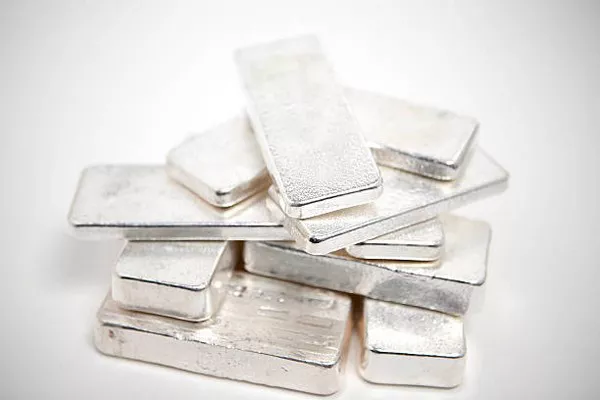In the realm of precious metals, silver holds a timeless allure. Its lustrous appearance and versatile applications have made it a coveted commodity for centuries. Within the silver market, authenticity is paramount, especially when it comes to purity. One common standard used to denote purity in silver is the hallmark “925,” signifying that the metal is 92.5% pure silver. However, with the rise of counterfeit goods, the integrity of such hallmarks has come into question. Can fake silver be stamped with the mark “925”? This article delves into the complexities of silver authenticity and explores the methods used to detect counterfeit silver.
Understanding the 925 Hallmark
The Authenticity Marker
The hallmark “925” has long been recognized as the international standard for sterling silver. This numerical designation indicates that the silver alloy consists of 92.5% pure silver, with the remaining 7.5% typically comprised of other metals, often copper. This alloy blend enhances the durability and strength of the silver while preserving its inherent beauty.
Legal Implications
In many countries, the stamping of silver with the hallmark “925” is regulated by law. Manufacturers and jewelers must adhere to strict guidelines to ensure the accuracy of such markings. Failure to comply with these regulations can result in legal repercussions, including fines and the loss of credibility.
The Rise of Counterfeit Silver
Challenges in Detection
Counterfeiters have become increasingly sophisticated in their methods, making it challenging to distinguish genuine silver from counterfeit replicas. One common tactic involves applying the hallmark “925” to inferior silver alloys or even non-silver materials, such as nickel or brass. These fraudulent practices not only deceive consumers but also undermine the integrity of the silver market.
Techniques Used by Counterfeiters
Counterfeiters employ various techniques to mimic the appearance of genuine silver. One approach is to plate base metals with a thin layer of silver, giving the illusion of authenticity. Another method involves mixing inexpensive metals with silver to create an alloy that closely resembles the color and sheen of genuine sterling silver.
Detecting Counterfeit Silver
Visual Inspection
While visual inspection alone is not foolproof, it can provide valuable clues regarding the authenticity of silver. Genuine sterling silver often exhibits certain characteristics, such as a consistent color and luster. However, counterfeit silver may appear dull or tarnished, particularly if it is composed of inferior materials.
Magnetic Testing
Since silver is not magnetic, magnetic testing can help identify counterfeit silver alloys containing ferromagnetic metals such as nickel or iron. By using a strong magnet to assess the metal’s magnetic properties, jewelers can determine whether it is likely to be genuine sterling silver.
Chemical Testing
Chemical testing involves subjecting the silver alloy to various chemical reactions to assess its composition. One common method is the use of nitric acid, which reacts differently with silver and base metals. By applying a small drop of nitric acid to the metal and observing the reaction, jewelers can determine whether the alloy is genuine sterling silver.
X-Ray Fluorescence (XRF) Analysis
X-ray fluorescence analysis is a non-destructive technique used to determine the elemental composition of materials. By bombarding the sample with X-rays and measuring the resulting fluorescence, analysts can identify the presence of silver and other elements within the alloy. XRF analysis is highly accurate and widely used in the authentication of precious metals.
Protecting Consumers and Upholding Integrity
Safeguarding Against Fraud
In an era rife with counterfeit goods, safeguarding against fraud is essential for both consumers and businesses alike. Manufacturers and retailers must implement robust quality control measures to ensure the authenticity of their products. This includes thorough inspection of raw materials, rigorous testing protocols, and adherence to industry standards.
Educating Consumers
Empowering consumers with knowledge is key to combating counterfeit silver. By educating the public about the hallmarks of genuine sterling silver and the methods used to detect counterfeit replicas, individuals can make informed purchasing decisions. Resources such as informational websites, consumer guides, and educational workshops can help raise awareness and promote transparency within the silver market.
Collaborative Efforts
Addressing the issue of counterfeit silver requires collaboration across various sectors, including government agencies, industry associations, and law enforcement. By working together to enforce regulations, share intelligence, and prosecute offenders, stakeholders can effectively combat fraudulent practices and protect the integrity of the silver industry.
See Also How Much Junk Silver Should I Own? A Comprehensive Guide
Conclusion
The hallmark “925” symbolizes more than just a purity standard; it represents trust, integrity, and authenticity within the silver market. However, the proliferation of counterfeit silver poses a significant threat to these principles. By employing a combination of visual inspection, testing techniques, and collaborative efforts, stakeholders can mitigate the risk of counterfeit silver and uphold the integrity of the precious metals industry. Ultimately, by remaining vigilant and informed, consumers can ensure that the silver they purchase is genuine, valuable, and worthy of its hallmark.


